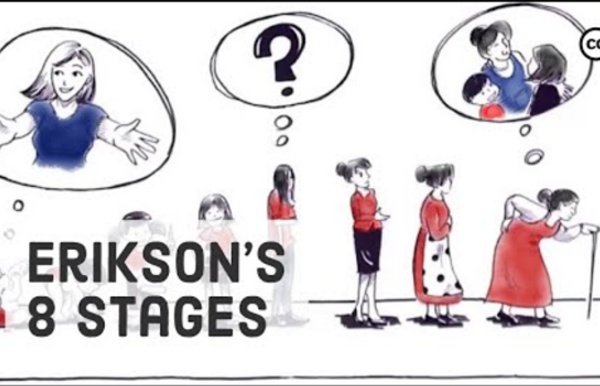



http://www.youtube.com/watch?v=aYCBdZLCDBQ
Related: Forging of identity during adolescence • Teenagers: The unique individuals who strive to forge a sense of identity during adolescence years. • Forging a Sense of Identity in Adolescence • A Sense of Identity in Teenagers • Teenage Identity - A guide for parentsUnderstanding the Three Stages of Adolescence - HealthPark Pediatrics While entering the teenage years may be intimidating for both you and your child, understanding the ups and downs of each stage can better prepare you to deal with any challenges. Each child is different, but you can generally expect the following changes during the three stages of adolescence as outlined by the American Academy of Pediatrics. Each stage is separated into lists of both physical and mental/emotional changes. Ages 10 to 13: Early Adolescence Physical Growth & Development Erik Erikson's Stages of Psychosocial Development Erik Erikson was an ego psychologist who developed one of the most popular and influential theories of development. While his theory was impacted by psychoanalyst Sigmund Freud's work, Erikson's theory centered on psychosocial development rather than psychosexual development. The stages that make up his theory are as follows:1 Let's take a closer look at the background and different stages that make up Erikson's psychosocial theory. Overview
Adolescent Identity Development: What to Expect in Teens Adolescent Identity Development: The Factors of Change Among the profound and exciting changes taking place in adolescence is the process of self-discovery. Our teens are working to figure out who they are, making adolescent identity development a central feature of teen life. 6.3 Adolescence: Developing Independence and Identity – Introduction to Psychology Learning Objectives Summarize the physical and cognitive changes that occur for boys and girls during adolescence.Explain how adolescents develop a sense of morality and of self-identity. Adolescence is defined as the years between the onset of puberty and the beginning of adulthood. In the past, when people were likely to marry in their early 20s or younger, this period might have lasted only 10 years or less—starting roughly between ages 12 and 13 and ending by age 20, at which time the child got a job or went to work on the family farm, married, and started his or her own family. Today, children mature more slowly, move away from home at later ages, and maintain ties with their parents longer. For instance, children may go away to college but still receive financial support from parents, and they may come home on weekends or even to live for extended time periods.
How Adolescents Search for Identity - iMom Menu Search Close Share what kind of mom you are! Get to know other mom types! How To Help My Young Adult with Identity Development “I am most excited about the freedom that I will have when I graduate from high school. The freedom that I am searching for is not to escape my family or anything of the sorts, but the freedom of going to a college and being myself.” - Lexie, Class of 2017, Summersville, WV Throughout their lifetime, your kids have been developing a sense of self, of identity, and self-awareness. You may have even noticed they became increasingly self-aware around puberty or around the 13-14 age range.
How Teenagers Find Themselves Teens are notoriously self-conscious. Now brain-imaging experiments are revealing how this adolescent predilection might be the result of changes in brain anatomy linked with the self, and the findings may hint at how the sense of self develops in the brain. One way we build a sense of self is by reflecting on how others perceive us, a concept psychologists have dubbed “the looking-glass self.” To see how teenagers reacted to what other people thought of them, researchers asked adolescent girls ages 10 to 18 to imagine a variety of scenarios involving onlookers that were designed to evoke social emotions such as guilt or embarrassment—for example, “You were quietly picking your nose, but your friend saw you.” It makes evolutionary sense for teenagers to be highly concerned about what others think, Blakemore suggests. Adolescence requires becoming more independent because one’s parents might not be around much longer.
6 Ways You Make a Difference as a Parent Real Families. Real Hope. Offer God's hope to hurting families.